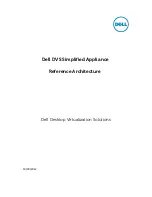
25
JS12 and JS22 can achieve a level of redundancy with Fibre Channel storage by using both ports
on the CFFh adapter and a pair of MSIMs and Fibre Channel switch modules. The I/O
redundancy from the two ports on the adapter can be extended by connecting to separate
external Fibre Channel switches or directly to separate ports on the storage subsystem. Similarly,
both ports on the CFFv SAS adapter and two SAS modules can be used to achieve a level of
redundancy with SAS storage.
JS23, JS43, PS700, PS701 and PS702 support this level of MPIO by using both ports on a CFFh
or CIOv adapter. These blade servers can also achieve adapter-level redundancy with Fibre
Channel storage by employing both a CFFh and a CIOv card simultaneously. To complete such
a configuration, two MSIMs and two Fibre Channel modules in I/O bays 8 and 10 would be
required, as well as two Fibre Channel modules in bays 3 and 4.
4.4.1. MPIO drivers
VIOS includes a basic MPIO driver, which has been the default instead of the RDAC driver since
November 2008. The MPIO driver can be used with any storage subsystem which VIOS
supports and is included in a default install. In this case, configuration is required only on the
storage subsystem in order to connect a single set of LUNs to both ports on a Fibre Channel
adapter owned by VIOS.
VIOS also supports the Subsystem Device Driver – Path Control Module (SDDPCM) for certain
storage subsystems. Examples of supported subsystems include the SAN Volume Controller
(SVC) and IBM DS8000. To find out whether a particular storage system supports SDD-PCM for
VIOS, consult its interoperability matrix on the SDDPCM Web site:
http://www.ibm.com/support/docview.wss?uid=ssg1S4000201. Note that there are separate
support statements for AIX and VIOS. If SDDPCM is supported on your storage subsystem for
VIOS, download and install the driver following the instructions in the
Multipath Subsystem
Device Driver User's Guide
at the same location.
4.5. Storage concepts for IBM i on Power blade in BladeCenter S
As with the BladeCenter H, IBM i does not have physical access to storage when running in the
BladeCenter S. In this case, storage is provided in the chassis itself in the form of one or two
Disk Storage Modules (DSMs), each containing up to 6 SAS drives and/or SAS-attached external
storage in the IBM DS3200. While SATA drives can also be placed in the DSMs and are
supported for IBM i, they are not recommended because of their performance and reliability
characteristics. The minimum SAS configuration in the BladeCenter S is one DSM with one SAS
drive or one SAS Connectivity Module and DS3200.
IBM i supports both types of SAS I/O modules that can be placed in BladeCenter S: the SAS
Connectivity Module (switch functionality only) and the SAS RAID Controller Module (switch and
RAID functionality). However, the two types of SAS modules allow for different storage support:
•
The SAS Connectivity Module does not support hardware RAID for the drives in the
chassis and supports attachment to DS3200, which provides its own RAID functions
•
The SAS RAID Controller Module supports hardware RAID for the drives in the chassis,
but does not support attachment to DS3200
Note that whether RAID functionality is provided by DS3200 through the non-RAID SAS module
or by the RAID SAS module, it is independent of the SAS expansion adapter on the blade.
Neither the CFFv SAS expansion card nor the CIOv SAS expansion card supports RAID itself.
Neither card has any read or write cache.
















































